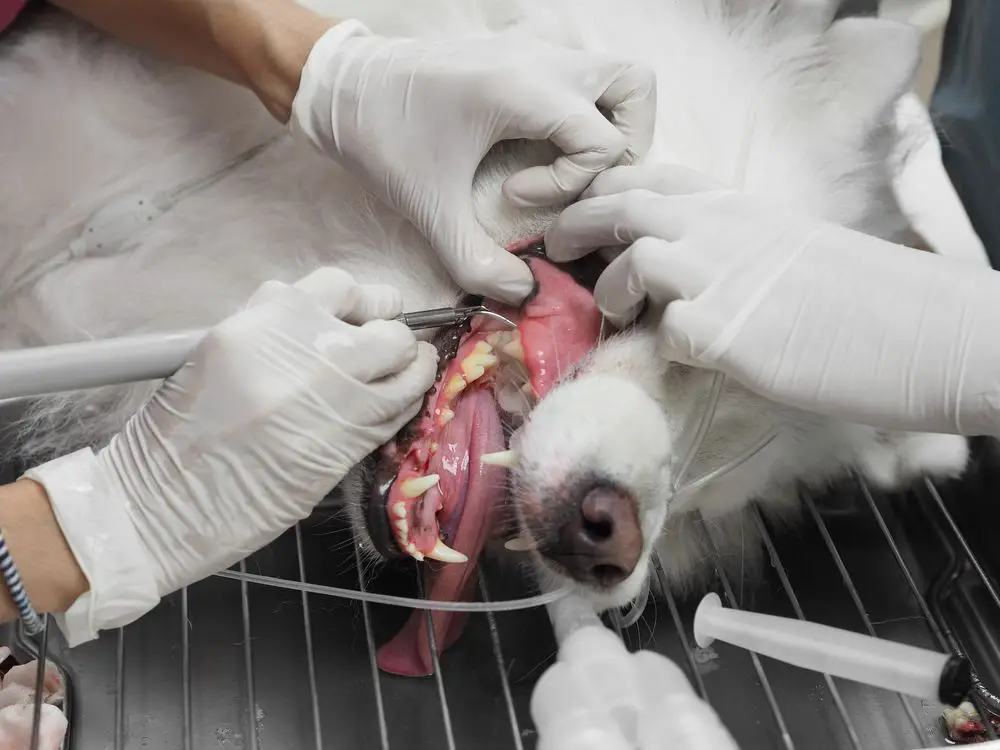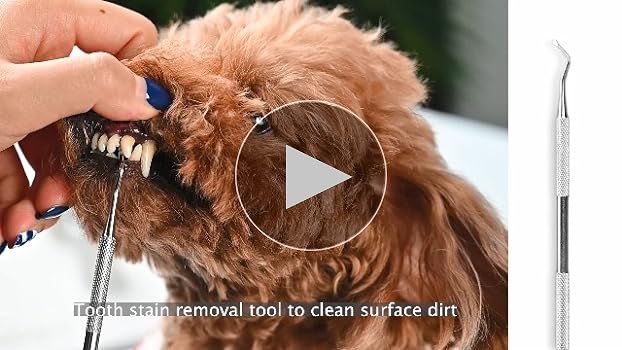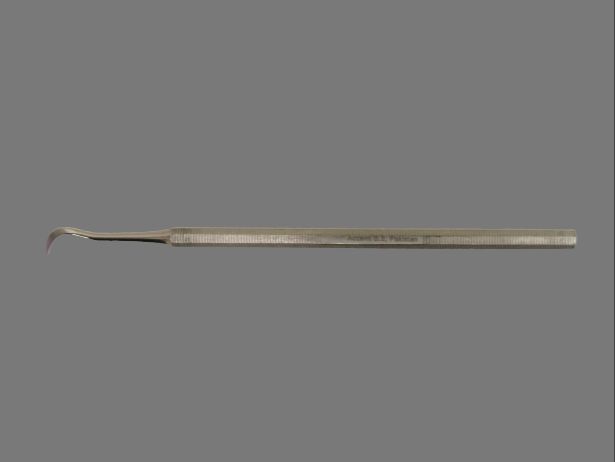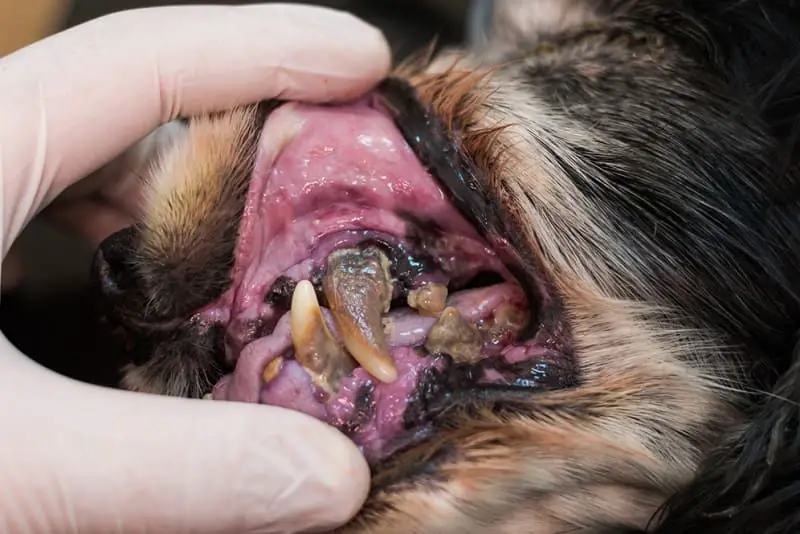What is Tartar on Dog’s Teeth?
Tartar, also known as calculus, refers to the hardened plaque that accumulates on a dog’s teeth if not removed through regular brushing. It forms when bacteria and food particles combine into a soft, sticky film called plaque on the teeth. Over time, this plaque hardens into tartar that adheres to the teeth.
Tartar is usually yellow, brown, or green in color. It commonly builds up around the gum line and on the back teeth, which makes it harder to remove. If tartar remains on the teeth, it can lead to serious oral health issues for dogs.
As more plaque and tartar accumulate, they provide an environment for bacteria to thrive. The bacteria can spread below the gum line, causing inflammation, infections, and periodontal disease. This can be very painful for dogs and lead to receding gums, tooth decay and loss, and bone loss in the jaw. Proper dental care is essential to remove tartar before it causes these problems.
Professional Dental Cleanings
Professional dental cleanings for dogs are typically performed by veterinarians once the pet has been placed under anesthesia. This allows vets to thoroughly examine the teeth and safely remove plaque and tartar from both above and below the gumline. Typical tools vets use for a thorough dental cleaning include ultrasonic scalers, which vibrate too fast for the eye to see and help loosen tartar; and handheld scalers or curettes, which have blunt edges to safely scrape tartar off without damaging enamel.
Most vets recommend adult dogs receive professional dental cleanings at least once a year. For dogs with significant plaque and tartar buildup, two dental cleanings per year may be recommended to get the teeth clean and prevent periodontal disease from progressing. Professional dental cleanings with a veterinarian are the gold standard for canine dental care.
At-Home Tartar Removal Methods

While professional dental cleanings are the gold standard for removing tartar from your dog’s teeth, there are some at-home options you can try between vet visits to slow down tartar buildup:
Brushing
Daily tooth brushing with a soft bristled brush and dog-safe toothpaste is the most effective home tartar removal method. Focus on the outer surfaces of the teeth and avoid scrubbing too hard to prevent gum damage.
Dental Chews
Special dental chews for dogs can help scrape off soft tartar and plaque. Look for products with the VOHC seal from the Veterinary Oral Health Council.
Water Additives
Some water additives contain chlorhexidine to reduce bacteria growth in your dog’s mouth. This can slow down tartar buildup when added to their drinking water daily.
Scraping/Scaling
You can buy dental scaler tools to gently scrape off soft tartar at home. Focus on the outer tooth surfaces and don’t forcefully scale under the gumline. Be very careful not to scratch or damage the enamel.
Is It Safe to Scrape off Tartar?
Scraping tartar off your dog’s teeth is generally safe if done carefully and correctly. However, there are some risks to be aware of:
Potential risks:
- Injury to gums – Scraping too hard can cut or tear the gums.
- Damage to enamel – Using metal scalers or improper technique can scratch enamel.
- Infection – An unsterile scraper can introduce bacteria under the gumline.
Avoid scraping if:
- Your dog has an underlying dental disease or cracked/damaged teeth.
- You cannot see clearly into your dog’s mouth.
- Your dog is in pain or resists having the teeth handled.
Proper technique:

- Use a specifically designed veterinary dental scaler.
- Work gradually and gently, avoiding scraping too hard.
- Focus only on visible outer surfaces of teeth.
- Stop if you meet resistance or your dog seems uncomfortable.
- Follow up with toothbrush and dog toothpaste.
While scraping tartar can be done safely at home in some cases, it’s always best to have a veterinarian assess your dog’s teeth first. Severe tartar buildup is best removed professionally under anesthesia.
Scraping Tartar vs. Brushing Teeth
Both scraping and brushing can be effective for removing tartar from a dog’s teeth. However, each method has its pros and cons.
Brushing is gentler and less invasive than scraping, making it a good option for dogs who are anxious about having their teeth cleaned. Brushing also removes plaque before it hardens into tartar. However, brushing alone often can’t fully remove large tartar deposits. It takes time and patience to regularly brush a dog’s teeth.
Scraping with a dental scaler quickly breaks up tartar and gets deep below the gumline where brushing can’t reach. However, scraping requires the dog to be under anesthesia and performed by a vet. There’s also a risk of accidentally damaging the enamel if not done properly. Excessive scraping could lead to sensitive teeth.
For most dogs, a combination of brushing and professional scaling is ideal. Brushing helps prevent plaque and fights new tartar buildup. Meanwhile, scraping with a scaler removes heavy tartar that brushing alone can’t handle. Overall, scraping tartar is more effective at removing large deposits, while brushing maintains dental health between vet visits.
Veterinary Dental Scalers

Veterinary dental scalers are specialized instruments designed specifically for scraping plaque and tartar off a dog’s teeth. They are typically long, thin, and have a small hooked tip. Vet scalers allow you to scrape tartar below the gumline and in hard-to-reach areas in a dog’s mouth.
Proper use of a vet scaler requires care and technique. First, make sure your dog is calm and still. Gently pull back the lips to expose the teeth. Hold the scaler at about a 45 degree angle and apply light pressure as you scrape the scaler along the tooth surface. Take care not to scrape too hard or you may damage the enamel. Work methodically around each tooth, focusing on areas with heavy tartar buildup.
Veterinary dental scalers can be purchased at many pet supply stores or online. They are also available for purchase directly through your veterinarian. Prices range from $10-30 for a basic scaler. Get one specifically designed for use on dogs. Make sure to disinfect the scaler after each use.
Other Tips for Tartar Removal
Here are some other tips that can help prevent and reduce tartar buildup on your dog’s teeth:
Regular brushing – Brushing your dog’s teeth at least 2-3 times a week can significantly reduce plaque and tartar. Use a soft-bristled toothbrush and dog-safe toothpaste.
Dental diet – Feeding dry food formulated to reduce plaque or raw bones to chew on can scrape off tartar. Avoid soft, wet foods that stick to teeth.
Chew toys – Providing safe, durable chew toys helps scrape tartar while satisfying chewing urges. Look for textured surfaces and avoid toys that could splinter.
Water additives – Adding an oral rinse or spray containing chlorhexidine to your dog’s water can inhibit bacteria growth and reduce plaque buildup leading to tartar.
When to See a Vet
While it’s possible to scrape some tartar off your dog’s teeth at home, it’s important to know when professional help is needed. There are certain signs that indicate your dog may have excessive tartar buildup or dental disease that requires veterinary attention.
One clear sign is excessive tartar accumulation on the teeth. Some tartar buildup is normal, but thick layers of tartar that cover the entire tooth surface indicate a more severe problem. Tartar that is brown or yellow in color is also a concern, as this points to advanced periodontal disease.

Loose teeth or teeth that appear to be deteriorating are another indication of dental disease. If you notice redness, swelling, or bleeding of the gums, this could signal gingivitis or advanced periodontal disease. Bad breath that doesn’t resolve with tooth brushing may also indicate infection or decay under the gums.
If you observe any of these signs, it’s important to schedule a veterinary dental cleaning and exam. The veterinarian will thoroughly clean the teeth above and below the gumline to remove tartar and plaque. They can also take dental x-rays, probe under the gums, and evaluate the health of the teeth and tissue. Addressing dental problems promptly is key to preventing tooth loss and more serious health issues.
Caring for Dog’s Teeth
To help keep your dog’s teeth clean and prevent excessive tartar buildup, it’s important to take proactive steps for their oral health.
Get your dog used to having their teeth brushed from a young age. Brush their teeth at least 2-3 times per week with a soft brush and dog-safe toothpaste. Focus on the outer surfaces of the teeth and avoid scrubbing too hard on the gums.
Providing safe, tartar-reducing chews can also help scrape away plaque. Look for treats made of rubber, rawhide or bones that are specially formulated for dental health. Avoid brittle cooked bones that may splinter.
Take your dog to the vet for regular dental checkups, usually done annually. The vet will do a thorough inspection for any potential problems. Depending on your dog’s oral health, the vet may recommend a professional dental cleaning if excessive tartar is present.
With proper home care and professional cleanings when needed, you can help ensure your dog’s teeth stay clean, healthy and tartar-free.
The Bottom Line
In summary, tartar buildup on your dog’s teeth is a common issue that should be addressed. While light tartar can be removed at home through brushing, scraping with tools, or using dental sprays or gels, heavy tartar buildup requires professional veterinary cleaning.
It’s important to take care of tartar on your dog’s teeth to prevent periodontal disease, pain and discomfort, and other health issues. Professional dental cleanings performed by your vet are the gold standard for removing heavy tartar, but regular at-home brushing and other dental care can help reduce tartar and keep your dog’s teeth healthy between professional cleanings.
While scraping with tools may help remove some buildup, it’s not a replacement for thorough brushing and professional veterinary care. Focus on establishing a regular oral hygiene routine, using vet-approved products, and scheduling annual dental exams to keep your dog’s teeth clean and tartar-free.